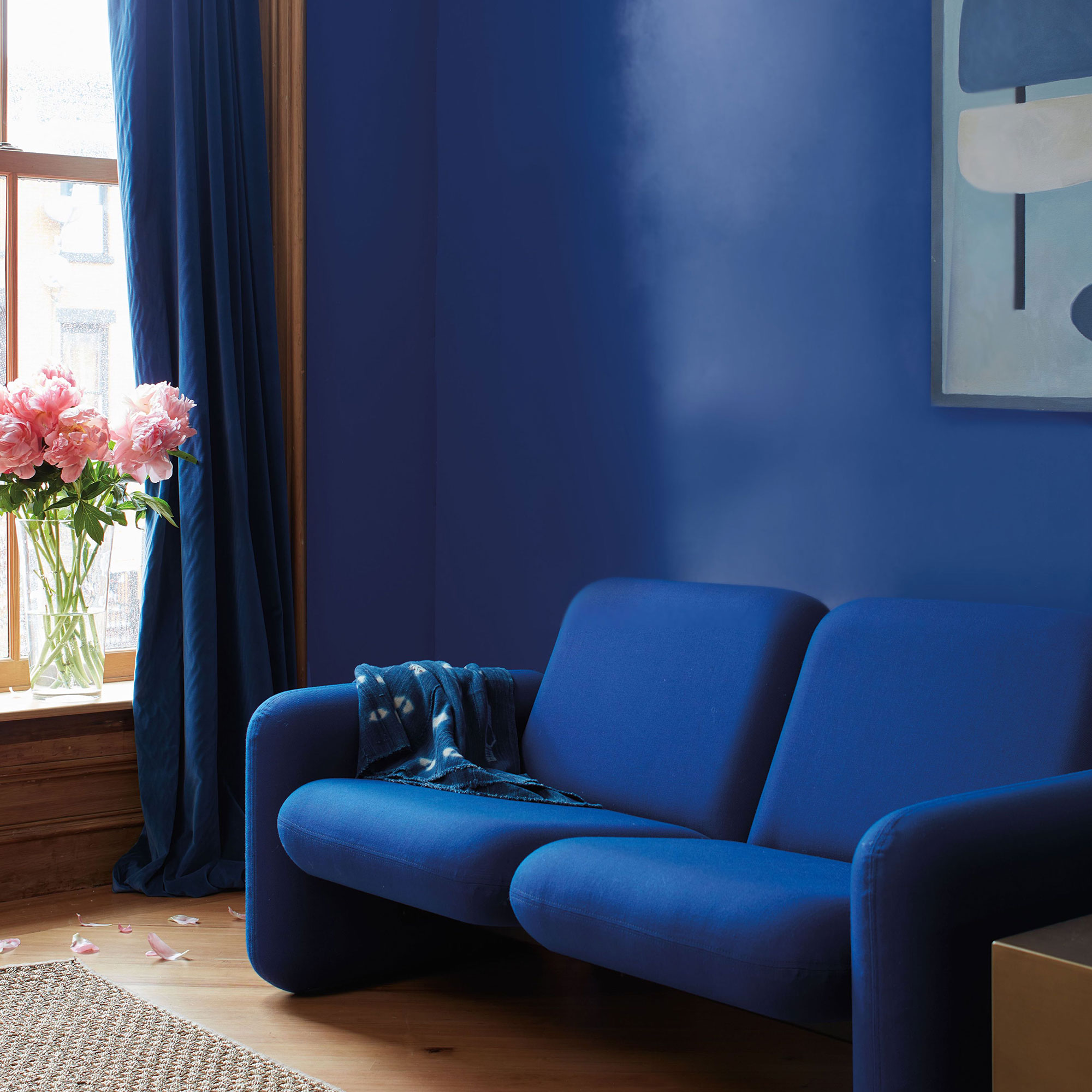The kitchen utensil decorators use to achieve a smooth finish when painting
Would you try this trick to get your leftover paint looking like new?


Painting is arguably one of the simplest DIY tasks – and this super affordable kitchen utensil painting hack could help to make it even easier.
Painting a wall might be easy enough with a new tin of paint, but if you plan to save money by using leftover paint around the home things can get tricky. One of the biggest issues novice DIYers face (vs a professional) are the imperfections found in old tins of paint.
Bits of dirt, dust or hard crusted-over paint can ruin the finish when painting a wall, and often leave us awkwardly picking at our recently completed masterpiece trying to smooth everything over. But there's actually a very easy way to avoid all of that, according to the experts.
Kitchen utensil painting hack
If you want to ensure a smooth, even finish when you're painting a wall, furniture, painting a skirting board, or even a ceiling, Toolstation's painting and decorating expert suggests using a sieve as part of your decorating routine. Yep – the very same £2 sieve you use to drain your pasta (although you might want to buy a new one for this trick...)
The idea is that the sieve will scoop out all the bits of debris, leaving you with a pot of paint that's like new.
They explained, 'It might surprise you to hear, but a kitchen sieve is part of many professional painter and decorators’ toolkits.
'Old paint can collect dust and debris over time, as well as flecks of dry, hard paint. Even brand new paint usually contains small lumps, which can prevent you achieving a perfectly smooth result – and there’s nothing worse than being left with a ‘bitty’ texture to your walls.'
Get the Ideal Home Newsletter
Sign up to our newsletter for style and decor inspiration, house makeovers, project advice and more.

To actually try the hack when planning your paint ideas, they explain, 'Simply position the sieve over a clean paint scuttle, and pour the paint through.
'Safely dispose of any particles that get caught in the sieve and start painting. After use, simply clean the sieve with warm soapy water or brush cleaner.'
And, this is a trick you can use time after time, according to the experts.
'Unlike tights and stockings which were used by some decorators to strain paint for many years (and which had to be thrown away each time) a metal sieve can be used over and over again - far more sustainable,' they said.
Sarah Lloyd, paint expert from Valspar, agreed that this trick is a good idea – and clarified that it's usually only necessary for older paint. She said, 'Straining paint is more common if the paint has been used previously, rather than a brand new tin. As mentioned, by straining the paint you will be able to remove any debris, dust or dirt and create a much smoother application.'

For a guaranteed smooth finish though, she also advised additionally cleaning your walls before painting.
'While using a sieve to strain paint is a good idea, we would always recommend also cleaning your walls for the best and smoothest results. It's a small tip that so many people forget about, but it can make a huge difference!' Sarah said.
'You should also thoroughly clean your brushes or rollers too, to remove any old paint or dust.'
However, not all decorators are fans of the tip. DIY expert Michael Rolland, from The Paint Shed, agreed that while straining your paint is a good idea, he wouldn't personally advise using a sieve. He said, 'A decorator would normally use a Ciret paint strainer if air had got into the (water based, usually) paint, and this has caused the paint to dry on the lid and then fall off into the paint, making it appear lumpy.
'And as mentioned, before paint strainers were released, a decorator would usually use an old pair of tights.'
But if you're decorating at home and in need of a quick fix a sieve with definitely do.

Amy Hunt is an experienced digital journalist and editor, now working in a freelance capacity specialising in homes and interiors, wellness, travel and careers. She was previously Lifestyle Editor at woman&home, overseeing the homes, books and features sections of the website. Having worked in the industry for over eight years, she has contributed to a range of publications including Ideal Home, Livingetc, T3,Goodto, Woman, Woman’s Own, and Red magazine.
-
 Wood drenching is the calming new twist on the colour drenching trend – here’s how to make the look work in your home
Wood drenching is the calming new twist on the colour drenching trend – here’s how to make the look work in your homeIt’s easier than ever to embrace natural materials
By Maddie Balcombe
-
 Aldi is launching a £200 day bed with four different features - its sleek design is suited to the whole family
Aldi is launching a £200 day bed with four different features - its sleek design is suited to the whole familyYou don't want to miss out on this Specialbuy
By Kezia Reynolds
-
 How to set up a drip watering system that saves water and a lot of effort
How to set up a drip watering system that saves water and a lot of effortKeep your plants hydrated (and your water bill down) with this clever garden watering solution
By Natalie Osborn